Latest Gear Live Videos
Monday February 9, 2009 1:26 am
Q&A: NORM FEUTI on Gill and Retail

Cartoonist Norm Feuti must draw with both hands at the same time. He has not one, but two comic strips going simultaneously. One strip, Retail, is syndicated by the granddaddy of all newspaper syndicates, King Features. The other is his own web comic Gill which debuted toward the end of last year. Retail is set in the world of, well, retail – about four employees of the fictitious Grumbel’s department store. It currently appears in about 70 newspapers worldwide. If your local paper isn’t one of them, you can read Retail everyday right here.
Gill is Norm’s second strip. Despite the syndicated success of Retail, Gill didn’t get traction with the syndicates. Norm made the leap to the internets and launched it as his first web comic. Gill is the story of a chubby kid, trapped in a lower income lifestyle, whose parents are divorced. Hijinks, naturally, ensue.
That might be more than enough to keep any cartoonist busy, but in 2007, Hyperion published Norm’s humorous Retail Employee Handbook called Pretending You Care. See what I mean about the drawing with both hands thing?
TOM: You have two regular strips going at the same time. How do you work your busy schedule around being a stay-at-home Dad?
NORM FEUTI: It’s not easy. My daughter is 7 now, so she’s in school, but my son is 3 and at home with me all day. It’s a balancing act for sure, but one that has forced a discipline upon me that I might not have developed otherwise. There are so few hours during any given day when I can work, that I can’t afford to waste any time.
TOM: How did Retail land at King Features?
NORM: My first attempt at getting a comic strip syndicated was in 2000 with a strip called Retail. This was a much different strip than the current version. It centered around the employees of a fictitious mall gift store called “World of Wonder.” The store was a carbon copy of all those pseudo-educational/intellectual gift shops like “World of Science,” “Learningsmith,” and “Natural Wonders,” that were ubiquitous to every suburban mall in the late 90s.
TOM: What happened with it?
NORM: I sent this first version of Retail to most of the major syndicates and got a form rejection letter from all but two of them - Tribune Media Services, and King Features. As was typical of his generosity, Jay Kennedy sent me a rejection letter, but expressed interest in the premise of a retail-based strip and took the time to write some tips on how I could make the strip better. At the same time, TMS contacted me by phone and wanted to showcase my submission on a website they ran at the time called Comics Edge - a site they used to let web viewers comment and vote on a different group of submissions once a month. For reasons I can’t recall, they wanted me to change the title to “World of Wonder,” which I did.
TOM: How’d that work out?
NORM: They paid me a small amount of money for my trouble, ran “World of Wonder” on their website that month, then sent me a rejection letter several months later. They offered no critique. They simply said thanks, but no thanks.
TOM: Nice. What was the next step?
NORM: For some crazy reason, I decided to take my next few submissions in an entirely different direction. My first idea for a comic strip elicited interest from two major syndicates simultaneously, but in my infinite wisdom, I decided the idea was dead in the water and decided to move on to something else ... brilliant.
My next strip submission was a collaborative effort called Brave New School. A friend of mine who is a brilliant writer and school teacher wrote the strip, and I did the artwork. It focused on the staff of a typically under-funded American elementary school. I liked this submission because it had a lot of heart and truth in it. Alas the syndicates weren’t interested.
My next submission was called Cosmo. It was a strip that focused on the life of a freelance artist, his girlfriend and wacky best friend. This strip was fun, but most noteworthy for the fact that it got the ball rolling on Retail again. Because I had no art credentials, I started including my short stint on the TMS website in my resume to beef it up. Once again, Jay Kennedy wrote me a letter. While he didn’t think the concept of “Cosmo” was engaging enough to sell, he noted that he would be very interested to see me revisit the “Retail” concept in a future submission.
TOM: And that idea was not dead in the water?
NORM: I came up with a new version of Retail as fast as I could. This second version of Retail was closer to the current version, but still different in many ways. By this time it was early 2005. This new version of Retail prompted a phone call from Jay who wanted to see the idea tweaked further. I took his advice and sent him a third version of Retail that he was impressed enough with to offer me a contract.
TOM: What were the steps after that?
NORM: I spent the next several months writing more strips and working with Jay Kennedy and Brendan Burford to put together a sales kit, and Retail finally launched on January 1st 2006.
TOM: How’s Retail doing in the face of the ongoing economic meltdown and the collapse of the newspaper industry?
NORM: Sales are slow for everyone in the comic strip business. The newspaper industry has been on the decline for a long time, and the current economic meltdown is certainly accelerating things. Still, my client list has been increasing slowly over the years, and I’ve had surprisingly few cancellations. I’m lucky to make a living doing what I do, so I have no complaints.
TOM: Where do you see the future of newspaper syndication?
NORM: Honestly I don’t think there is much of a future in traditional newspaper syndication. The syndicates will always make money selling comics to newspapers, even as they continue to decline, change and adapt. Ultimately however, I think it will get to the point where the vast majority of the daily comic strip audience will be reading their favorite strips online via computers or mobile devices. As this happens, the syndicates will have to adapt as well and eventually invent and/or transition to an online business model that works.
TOM: Are you self-taught?
NORM: Yes, I’m self-taught. Among my cartoon influences were Bill Watterson, Charles Addams, Berkeley Breathed, Chuck Jones, Tex Avery, and Walt Disney. I always find myself being influenced/inspired by current cartoonists too. Richard Thompson (Cul de Sac, and Richard’s Poor Almanac) and Danielle Corsetto (Girls With Slingshots) to name a couple.
TOM: You have a syndicated newspaper strip and a webcomic. Do you approach each one differently?
NORM: I do, but not so much in a technical way. I use the same tools for each. I pencil each strip onto Strathmore 300 series Bristol first, then ink with a Kuretake brush pen and Rapidograph pens. The most ironic technical difference is that I use a computer font for Retail, but I hand letter my Gill strips.
TOM: Gill has a really nice line to it.
NORM: I use the Kuretake brush pen for the line work and lettering. I use a Rapidograph pen for the panel borders, Shandra’s skin tone, and Dad’s perpetual 5 o’clock shadow.
TOM: What are the deadlines like?
NORM: Time isn’t as sensitive an issue with my web comic as it is with my syndicated strip. My daily Retail strips have to be written 5 weeks in advance, and the Sundays have to be 9 weeks ahead of the print date. I can write and draw a Gill strip the day before I post it if need be. I guess the biggest difference is in the way I approach the writing. Newspaper strips need to be very sanitary ... often to the point of ridiculousness. With a web comic you have carte blanche. The only sensibilities you have to worry about are your own.
TOM: What are the creative differences between working for the syndicate and working for yourself?
NORM: With Retail I know there is a line I can’t cross, so there are some places I just won’t bother going with the strip. With Gill, I can write what I think is funny regardless of whether it tests the boundaries of “acceptability.” Mostly it’s the “don’t offend anybody” sensibility of newspapers that represents the biggest creative difference for me. With Gill, I don’t have to worry about offending anyone.
TOM: What’s the hardest part about doing a web comic?
NORM: Staying motivated can be difficult. You go into a web comic knowing the odds are slim of turning it into a financial success. Even if you do accomplish that, it will almost certainly take years of unpaid hard work first. It’s easy to slack when you’re not being paid, but you have to update regularly and consistently to build and maintain an audience.
TOM: It’s relatively easy to measure the success of a syndicated strip – count the papers. What’s your measurement for Gill?
NORM: Right now I judge Gill’s success by how many people are reading it and how well it connects with people. In that regard, Gill is a huge success so far. It’s been very well-received by both fans and professionals in the industry, and the number of readers I have has been steadily increasing since I launched it last November (2008). If both of those things continue in the same direction, I’ll be happy.
TOM: What made you decide to launch Gill as a web comic?
NORM: The freedom, the growing number of success stories related to online comics, and the stark realities of the newspaper industry. I earn my income from newspaper sales right now, but who knows how long that will last? I wouldn’t have to lose much of my client list before I’d be in a tough spot, so I’m branching out now.
TOM: Gill’s circumstances – overweight, underprivileged and bounced between his divorced parents – really make him stand out from other comic strip kids, yet he’s still likeable and relatable. He might be trapped in a less-than-perfect lifestyle, but he doesn’t come off as a total loser like Charlie Brown. Where did the idea for Gill come from?
NORM: The idea for Gill came from my own upbringing. I grew up in a small town in rural Rhode Island. My mom worked in a factory and raised me and my older sister by herself after my dad split. We grew up poor, but that was par for the course where I grew up. I only had one or two friends whose parents weren’t divorced. It was normal to me.
TOM: So are you Gill to some extent?
NORM: Gill isn’t a direct reflection of my own life, but it’s a close cousin. I was actually a scrawny kid growing up. And although my real father took off and ditched his responsibilities, he wasn’t the racist jerk Gill’s dad is. My dad’s biggest problem has always been in a bottle. Real families and childhoods are messy and complicated. To me, Gill is about trying to take a look back at those challenges with a little bit of fondness ... reflecting on what it was like to reconcile the less than perfect world around us.
TOM: What kind of reaction are you getting from Gill now that it’s up and running?
NORM: Fans of Gill have been very generous with their praise. People are genuinely connecting with the strip. It seems that Gill’s childhood isn’t all that different from their own.
Thanks, Norm. If you like seeing Retail in your local newspaper or would like to see Retail in your local newspaper, it’s always a good idea to drop a note to the editor and let her know. As for Gill, bookmark Norm’s website and pass the link around to friends who need some laughs.
(Gill artwork © Norm Feuti)
- Related Tags:
- brendan burford, cul de sac, gill, jay kennedy, king features syndicate, kuretake brush, norm feuti, retail, richard thompson, web comics
Advertisement
Advertisement
Advertisement
© Gear Live Media, LLC. 2007 – User-posted content, unless source is quoted, is licensed under a Creative Commons Public Domain License. Gear Live graphics, logos, designs, page headers, button icons, videos, articles, blogs, forums, scripts and other service names are the trademarks of Gear Live Inc.



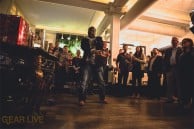
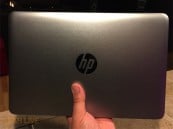

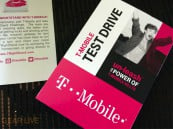

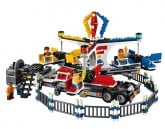
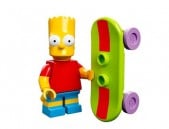


Comments: